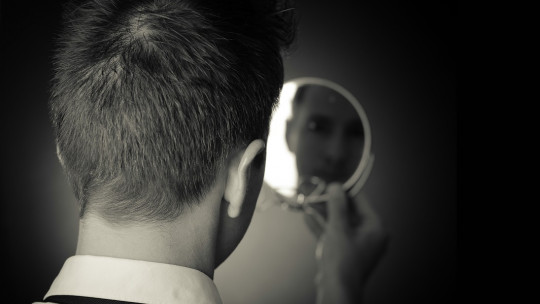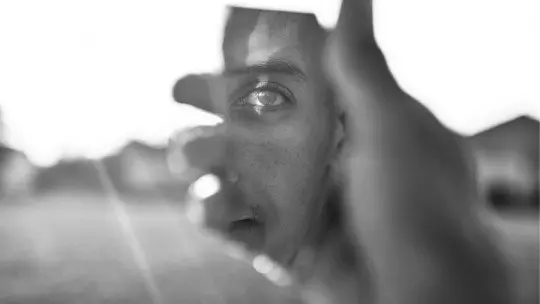The mirror can sometimes give us an image of ourselves that we do not want. Frequently, we pay attention to the eyes of the people we care about and take various actions to please them. Despite this, it can happen that we forget to think about what kind of image it is possible to have beyond social stereotypes.
Capitalism imposes certain norms to follow to be part of certain social circles. Given this, it may happen that we have different feelings and/or emotions regarding the image that the mirror can give us, since we see ourselves reflected there. Fear is an emotion that can frequently occur in these types of circumstances and this can have consequences that affect daily life. Therefore, it is important to have valuable data to understand this problem and address it correctly. In this PsychologyFor article, we will provide you with information about the Eisoptrophobia: symptoms, causes and treatment.
What is eisoptrophobia
If you want to know what eisoptrophobia is, it is defined as an anxiety disorder in which there is intense fear of the image that the person’s mirror may reflect. In other words, it consists of the phobia of mirrors. This disorder is found within specific phobias and has a series of characteristics that define it. According to the DSM-V(1)specific phobias such as eisoptrophobia meet the following characteristics:
- Intense anxiety or fear facing a specific situation.
- Avoidance of the situation or object that produces the phobia.
- The anxiety or fear is disproportionate to the real danger posed by the situation or object.
- The duration of fear is six months or more.
- Deterioration of relationships work, family and social due to fear or anxiety.
Despite the points just described, it should be noted that its presence does not necessarily imply that we are dealing with a condition of eisoptrophobia. It is important that the diagnosis is made by a health professional since he or she will be in charge of evaluating the clinical evolution of the patient, taking into account the most relevant characteristics of the patient.
Symptoms of eisoptrophobia
Regarding the symptoms that appear in a picture of eisoptrophobia, it is possible to highlight some manifestations that occur when a person is in front of a mirror. Find out what the symptoms of eisoptrophobia are.
- Tachycardia.
- Sweating.
- Shortness of breath.
- Thoughts referring to death.
- Escape attempts of the mirror.
- Headache. In this article you will find different home remedies for headaches.
- Stomach ache.
- Nausea.
- Dizziness
- Anxiety.
Causes of eisoptrophobia
One of the most important aspects to consider when faced with this type of pathology is to locate the causes that generate it. Understanding the triggers of a problem is beneficial, as it provides interesting data when dealing with it. Here we will explain what causes eisoptrophobia.
unpleasant experiences
On the one hand, human beings have the ability to acquire habits and behavioral traits through the experiences they go through throughout their lives. In the case of eisoptrophobia, it may happen that the person has experienced a stressful and/or distressing moment in which he saw himself reflected in a mirror. This situation is stored in memories and is later expressed through this disorder.
On the other hand, it is possible that behavioral traits are imitated observed in other people who have suffered intense fear in front of a mirror. Here imitation plays an important role in understanding human behaviors.
Low self-esteem
The way a person perceives themselves has implications on the image returned by the mirror. People who have low self-esteem may present eisoptrophobia, since their body image appears weakened and violated. In these cases, you can consult this article on How to psychologically help a person with low self-esteem.

Treatment of eisoptrophobia
Currently, there are a series of treatments that are highly effective in the treatment of eisoptrophobia. Although each of them may have a different approach, the important thing is that they have scientific support that validates their effectiveness. Next, you will see how to remove the fear of mirrors:
Psychological therapy
As we have seen previously, the causes of fear of mirrors can be experiences that have an emotional impact. For this reason, psychological therapy allows us to work on the emotions that are associated with this clinical condition.
On the one hand, short-term therapies are focused on problem solving and their focus is on providing tools for that those people who suffer from this problem can cope with stressful situations with other modalities.
On the other hand, long-term therapies try to place the origin of conflicts in the past. This makes it possible for the person to build other alternatives when facing situations that generate stress and/or anxiety.
Psychiatric medication
In more serious cases, the treatment of eisoptrophobia can be addressed by taking medication. Drugs produce changes in neuronal functioning, which is associated with the regulation of emotions such as fear. However, the intake of medications must be supervised by a health professional to work together with other professionals.
This article is merely informative, at PsychologyFor we do not have the power to make a diagnosis or recommend a treatment. We invite you to go to a psychologist to treat your particular case.
If you want to read more articles similar to Eisoptrophobia: symptoms, causes and treatment we recommend that you enter our Clinical Psychology category.
- American Psychiatric Association. (2013). Diagnostic and Statistical Manual of Mental Disorders (DSM-V). Arlington: Panamericana Medical Publishing.
Bibliography
- Vargas Diaz, JD (2013). Catoptrophobia “Massive advertising images and the social reflection in the message they contain.” Pontifical Javierana University. Faculty of Arts, Visual Arts major.
- Zurdo, D. (2012). The rarest rare diseases in the world. Training manual of the Act, 62 (1), 111-124.









